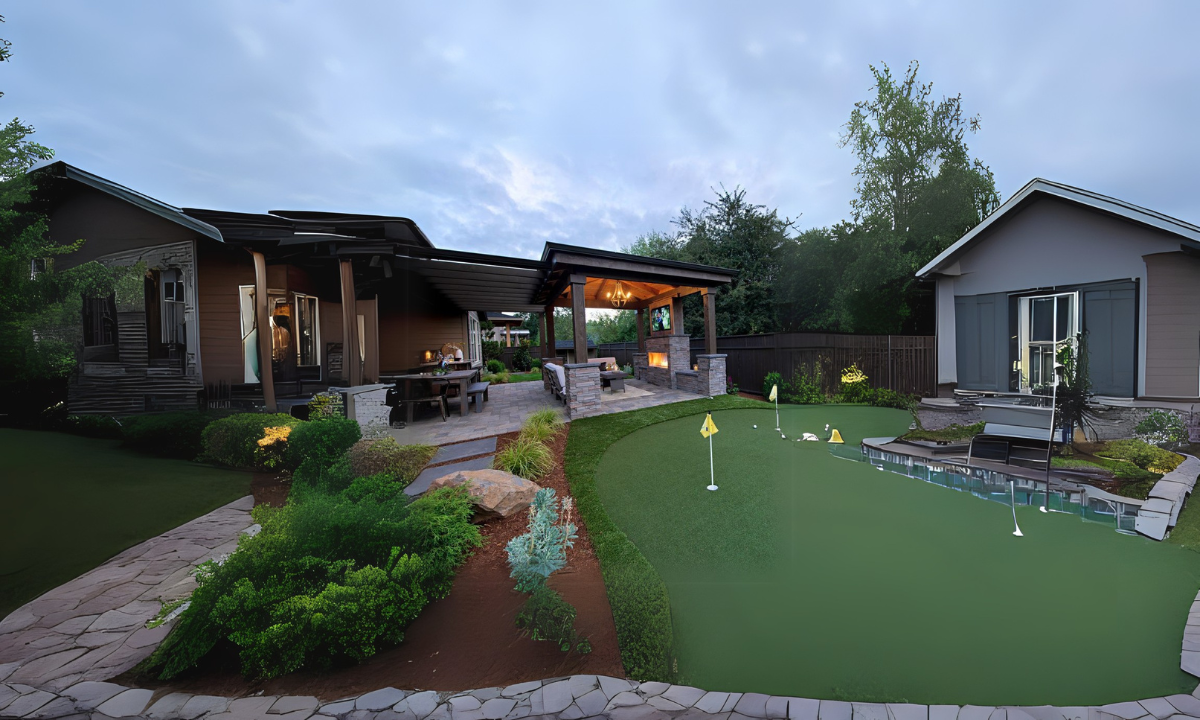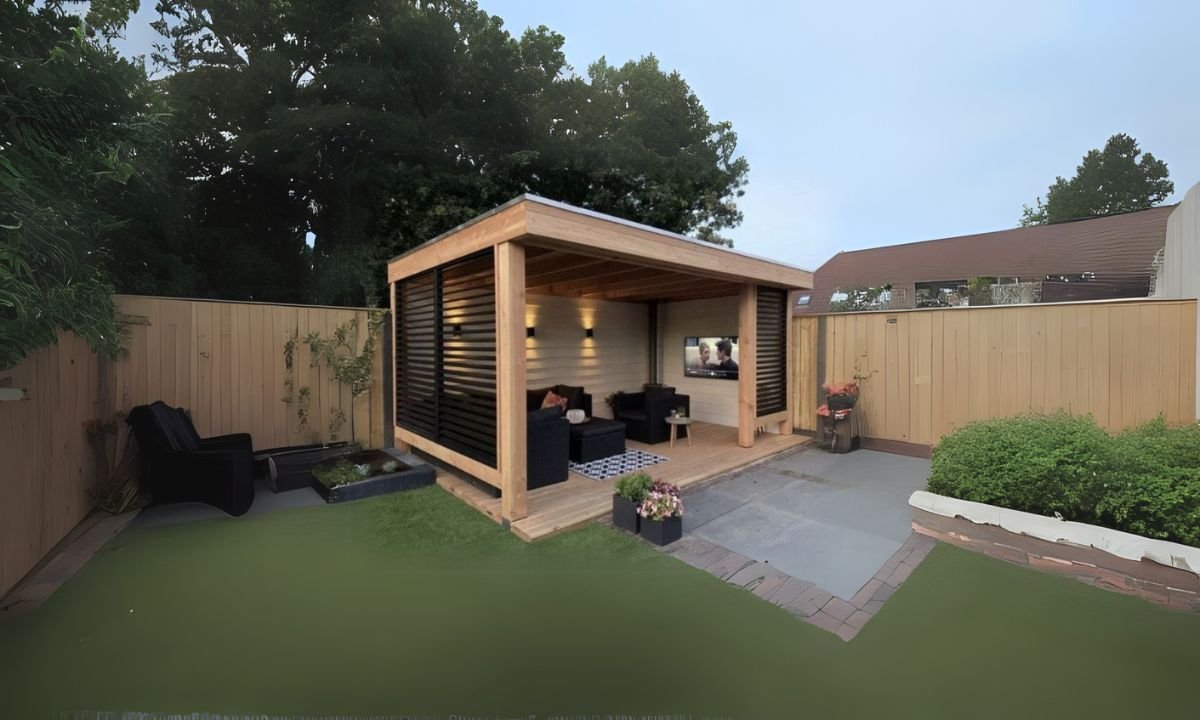Low Maintenance Decking

The maintenance-free decking boards from GravityBuilds are an easy-care outdoor flooring option that requires minimal maintenance over the course of its lifetime. Although zero-maintenance decking does not exist, our low-maintenance decking boards are unquestionably the closest thing to a hassle-free existence.
If you're searching for a low-maintenance deck that doesn't require you to spend a whole day cleaning, composite decking is the ideal option. Composite decking is not only aesthetically pleasing but long-lasting as well.
This article will explain why composite decking requires little maintenance and what you can do to make your composite deck last longer.
What Is Composite Decking?

Composite decking is a man-made material composed of wood fibres, plastic, and bonding agents. Designed to mimic the look of natural wood, composite boards offer a durable, stylish, and eco-friendly alternative to traditional decking materials.
The boards come in various colours and finishes, making it easy to achieve the aesthetic you want for your home. But what makes composite decking a real game-changer is its low maintenance—a major selling point for busy homeowners.
This article will explain why composite decking requires little maintenance and what you can do to make your composite deck last longer.
Is Composite Decking Maintenance-Free?
Composite decking is far less maintenance-intensive than timber decking, but it still requires some upkeep. Weather, grime, and wear over time can affect any outdoor textile.
The composite decking cleaning procedure is simple, nevertheless. In contrast to wood, it doesn't need to be sanded, sealed, or stained annually. With just a little soap, water, and a quick scrub, the majority of composite decks will stay in excellent condition—a tremendous relief for people who would rather enjoy their deck than spend more time maintaining it.
Maintenance Drawbacks of Timber Decking
Timber decking's ageless appeal and inherent beauty make it a popular choice for outdoor areas. However, there are a number of maintenance issues that need to be taken into account prior to installation. The following are the main upkeep issues with timber decking:
Susceptibility to Weather Damage
Warping and Splitting: Timber expands and contracts with temperature and humidity changes, which can lead to warping, splitting, or cracking.
Rot and Decay: Prolonged exposure to moisture can cause timber to rot, especially if it's not treated or maintained regularly.
Fading: Sunlight exposure leads to discoloration and fading, requiring re-staining or sealing to restore its appearance.
High Maintenance Requirements
Regular Cleaning: Timber decking requires frequent cleaning to remove dirt, mold, and mildew that can accumulate on the surface.
Re-staining and Sealing: To preserve its appearance and durability, timber decking must be re-stained and sealed periodically, typically every 1-2 years.
Repairs: Splinters, cracks, or loose boards may need to be repaired or replaced to maintain safety and aesthetics.
Vulnerability to Pests
Timber is a natural material that can attract pests such as termites, wood borers, and carpenter ants. This requires ongoing vigilance and, sometimes, professional pest control treatments.
Moisture Retention Issues
Timber decks, especially in shaded or damp areas, can become slippery due to moss or algae growth. Regular cleaning and anti-slip treatments are needed to mitigate this risk.
Cost of Maintenance
Maintaining timber decking can be expensive over time due to the cost of cleaners, stains, sealants, and professional services for repairs or pest control.
Environmental Impact of Treatments
To maintain durability, timber often needs chemical treatments to resist decay and pests. These treatments may have environmental consequences if not applied or disposed of responsibly.
Limited Lifespan Without Maintenance
Without proper and consistent maintenance, timber decking deteriorates faster, leading to a shorter lifespan compared to alternative materials like composite decking.
Difficulty in Restoring Appearance
Over time, wear and tear may cause the deck to look aged and weathered. Restoring it to its original condition can be labor-intensive and sometimes requires professional help.
Wooden vs Composite Decking Maintenance
Wooden Decking Maintenance
Wooden decking is valued for its natural look and traditional aesthetic. However, it requires consistent maintenance to preserve its appearance and longevity.
Sealing and Staining
Wood is porous and prone to absorbing moisture, which can lead to warping or rotting.
To protect it, you’ll need to apply sealants and stains at least once a year. Staining also helps preserve the color and prevent UV damage.
Cleaning
Wooden decks require regular cleaning to prevent the buildup of dirt, mold, and mildew.
Use a deck cleaner and a soft-bristle brush or pressure washer (at a low setting) to maintain cleanliness.
Repairs
Wood is susceptible to cracking, splintering, and insect infestations.
Periodic inspections are necessary to catch and replace damaged boards.
Painting
Over time, wooden decking may require repainting or refinishing to maintain its appearance and protect the surface.
Longevity
With proper maintenance, wooden decks can last 10-15 years, depending on the wood type (e.g., pressure-treated pine, cedar, or redwood).
Composite Decking Maintenance
Composite decking, made from a mix of wood fibers and plastic, is designed to mimic wood's appearance while offering superior durability and minimal upkeep.
Cleaning
Composite decks need cleaning only a few times a year with soap and water or a specialized composite deck cleaner.
No sanding, staining, or sealing is required.
Mold and Mildew Resistance
Composite materials resist mold and mildew better than wood. However, regular cleaning prevents dirt buildup, which can lead to surface stains.
Repairs
Composite boards are less likely to crack, splinter, or warp.
Damage is rare but may require replacing individual boards if it occurs.
Color Retention
Composite decking is engineered to resist fading and UV damage, eliminating the need for repainting or staining.
Longevity
Composite decks can last 25-30 years or more with minimal maintenance, making them a cost-effective, long-term choice.

FAQs
How long does composite decking last?
Most composite decking will last 25–30 years, with many brands offering warranties that reflect this.
Does composite decking fade over time?
Some fading may occur in the first few months of outdoor exposure, but high-quality composite decking is treated to resist significant discolouration.
Is composite decking environmentally friendly?
Yes! Many composite products are made from recycled materials, such as plastic bags and reclaimed wood, reducing waste.
Can composite decking handle heavy furniture or grills?
Yes, composite decking is designed to bear significant weight, making it perfect for entertaining spaces with outdoor furniture and grills.
Make Decking Enjoyable Again
The ultimate purpose of decking is to create a space where you can relax and enjoy, not add to your list of chores. Composite decking offers a smart, sustainable, and stylish solution for homeowners looking to minimise upkeep while maximising aesthetics.
If you’re ready to ditch the hassle of traditional wood decking, start exploring composite options today. With a little care, you’ll have an outdoor space that you can enjoy for decades to come.
fgvdsu
